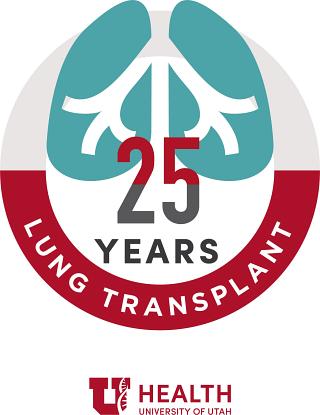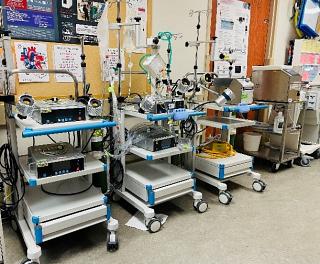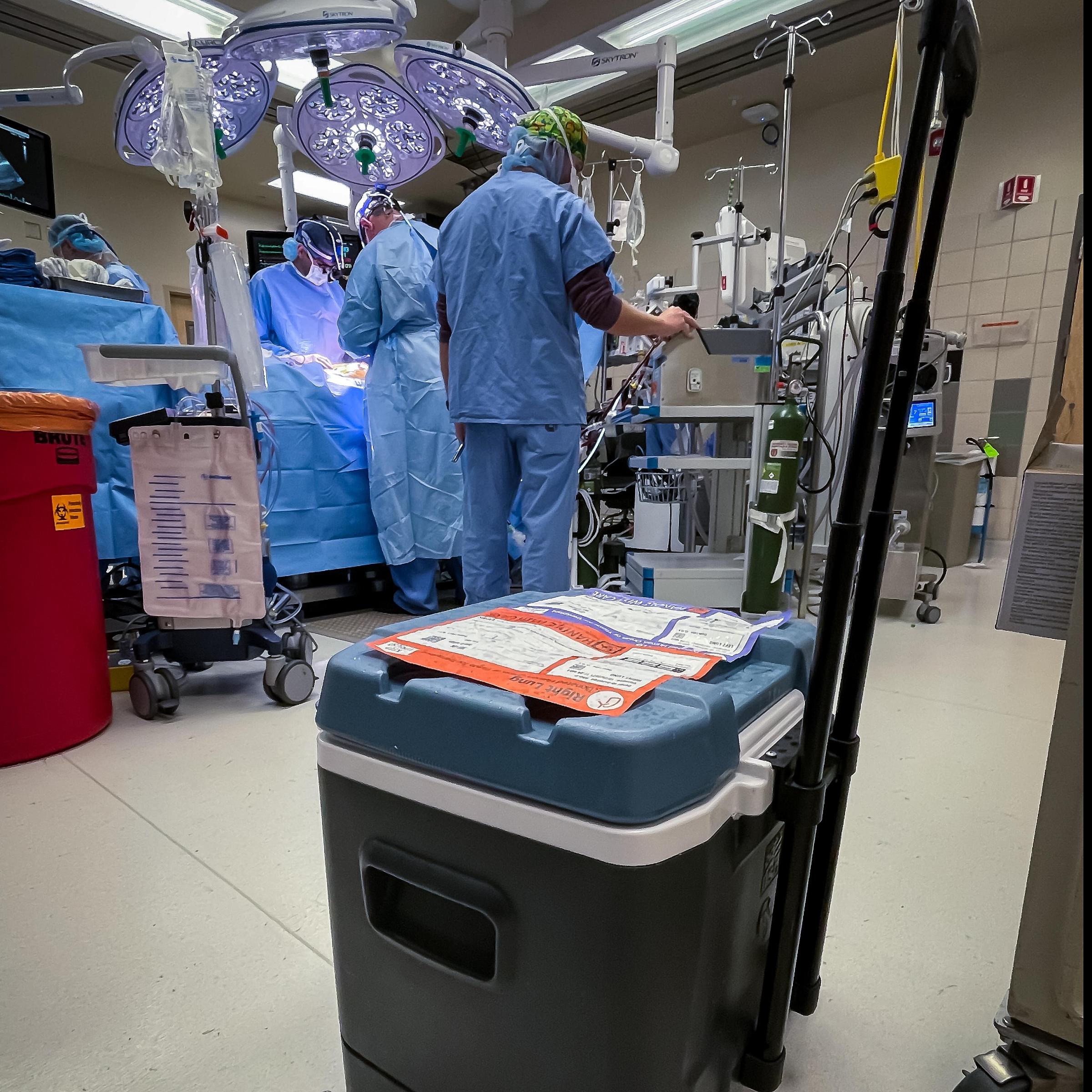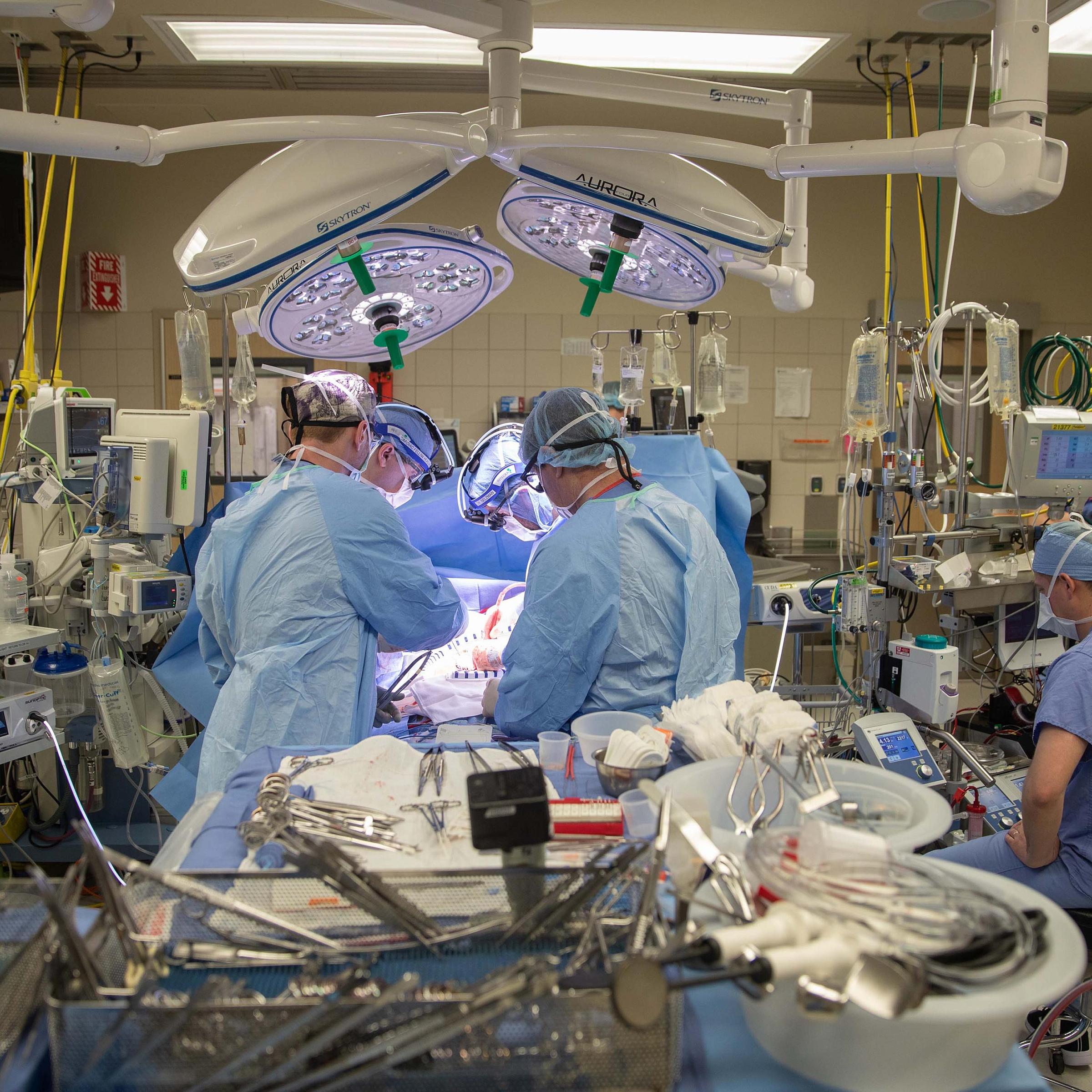The heart failure and thoracic transplant surgeons within the Adult Cardiac section of the Division have been busy as usual. Our success and innovation is made possible by the dedication of our extraordinary team at the University of Utah.
Transplant Program
We have seen incredible growth of our lung transplant referrals and transplants. Much of the credit can be attributed to the leadership of Matthew Morrell, MD and John Stringham, MD, our medical and surgical directors, respectively, as well as the outreach efforts of Keith Perry and our transplant coordinators. In the first half of 2022, we implanted new lungs into 15 recipients and are projected to complete the highest number of lung transplants in program history this year. We recently celebrated the 25th anniversary of the lung transplant program at the U and our 300th transplant.
We have become one of a handful of transplant centers in the United States to have a Donation after Circulatory Death (DCD) heart transplant program. Utilizing a technique called normothermic regional perfusion (NRP), or more specifically, thoracoabdominal normothermic regional perfusion (TA-NRP), our team has been able to evaluate hearts from DCD donors and offer these organs to our patients with excellent outcomes. Additionally, we are set to begin DCD Lung transplantation using both traditional DCD procurement and NRP techniques.
Mechanical Circulatory Support Program
We continue to offer a variety of acute, temporary mechanical support options for patients with cardiogenic shock or refractory respiratory failure. In the height of the Covid pandemic, we were busy as the VV ECMO referral center for the region. Thankfully, the ICU volume and ECMO volume for Covid have decreased substantially. With the change in the heart transplant allocation system in 2018, more patients with cardiogenic shock are being bridged to transplant with temporary mechanical circulatory support. We have been using axillary artery access more for Impella 5.0 and 5.5 placement, in addition to intra-aortic balloon pump placement. We have the highest volume of Impella 5.5 use in the region with excellent outcomes to transplant or durable support. With the aid of our incredible therapy teams, we have been able to keep these patients ambulatory and working with therapy while awaiting for transplant.



